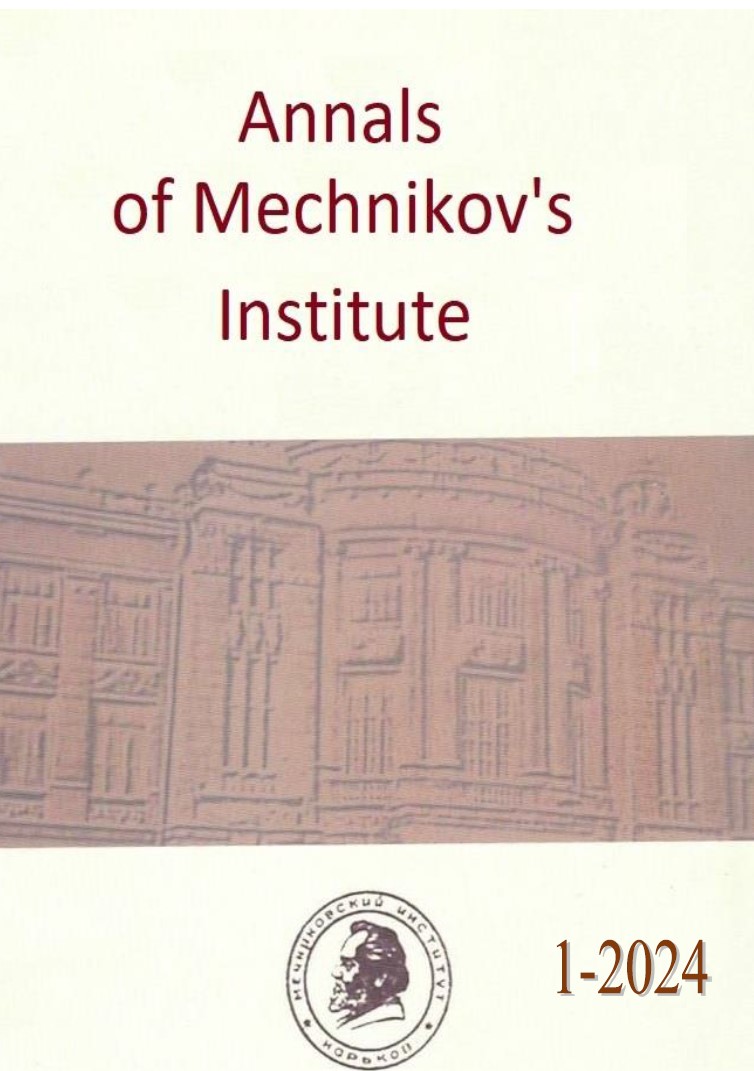Study of the elemental composition of rhizome with roots of horse sorrell
DOI:
https://doi.org/10.5281/zenodo.10839035Keywords:
Keywords: horse sorrel, rhizomes with the roots, elemental compositionAbstract
Introduction. Macro- and microelements are one of the most important groups of biologically active substances, the deficiency of which in the body leads to disruption of the immune system, hematopoietic system, and metabolism. Horse sorrel is an invasive plant that is widespread and does not require special growing conditions. The underground organs of the plant are used in traditional medicine and they contain tannins, anthracene derivatives, organic acids, polyphenolic compounds, anthocyanins, carbohydrates. It is known that the presence of such elements as potassium, sodium, chlorine, nitrogen and phosphorus in the soil effects on the growth of the horse sorrel, but we did not find modern studies on the study of the elemental composition of plant raw materials that grow wild in soils without fertilizers. Therefore, the study of the elemental composition of rhizomes with roots of horse sorrel, which grows in natural conditions in different regions of Ukraine, is relevant. The purpose of the work is to study the elemental composition of rhizomes with roots of horse sorrel, which grows wild in different regions of Ukraine. Materials and methods. It was used rhizomes with the roots of horse sorrel for the research. Elemental analysis was carried out using the atomic emission spectrographic method with photographic registration on the DFS-8 device. Results and discussion. It was determined the quantitative content of 15 elements: 5 macro- and 10 micro-elements in five series of the wild plant raw material of horse sorrel. It is observed the following pattern of accumulation of macroelements in all series: K>Ca>Na>Mg>P. The highest content is characteristic of K and Ca. The P content in all series was the lowest. The following regularity is observed in the range of identified microelements for 5 series of plant raw materials: Si> Fe> Al> Mn. Content of Mo and Pb were in minor amounts in all series of plant raw materials. The amount of as is beyond the sensitivity of the device. The content of toxic elements is within the limits stipulated by the requirements of SPhU 2.0. Conclusions. It was studied the elemental composition of 5 series of rhizomes with the roots of wild species of horse sorrel which grows in different regions of Ukraine. The quantitative content of 15 elements was determined: 5 – macro- and 10 microelements. It was established that the content of macroelements K and Ca and microelement Si dominates in 5 series. The content of Pb was <0.03mg/100g, and As is beyond the sensitivity of the device. The obtained results will be taken into account when a tincture from the rhizomes with the roots of horse sorrel be create.
Keywords: horse sorrel, rhizomes with the roots, elemental composition
References
Baloch S. Essential and Non-Essential Elements in Medicinal Plants: A Review. Biomedical Journal of Scientific & Technical Research. 2021. 33. 4. P. 26098-26100. DOI: 10.26717/BJSTR.2021.33.005446
Al-Fartusie F. S., Mohssan S. N. Essential Trace Elements and Their Vital Roles in Human Body. IndianJournalofAdvancesinChemicalScience. 2017. 5. 3. P. 127–136. DOI:10.22607/IJACS.2017.503003
Prateeksha Yusuf MA, Singh, BN, Sudheer S, Kharwar RN, Siddiqui S, Abdel-Azeem AM, Fernandes Fraceto L, Dashora K, Gupta VK. Chrysophanol: A Natural Anthraquinone with Multifaceted Biotherapeutic Potential. Biomolecules. 2019. 9. P. 68. DOI: 10.3390/biom9020068
Brima EI. Levels of Essential Elements in Different Medicinal Plants Determined by Using Inductively Coupled Plasma Mass Spectrometry. J Anal Methods Chem. 2018. 20. 7264892. DOI: 10.1155/2018/7264892
Feduraev P, Skrypnik L, Nebreeva S, et al. Variability of Phenolic Compound Accumulation and Antioxidant Activity in Wild Plants of Some Rumex Species (Polygonaceae). Antioxidants (Basel). 2022. 11. 2. P. 311. doi.org/10.3390/antiox11020311
Oproshanska T., Khvorost O., Batiuchenko I., Ivanauskas L., Belikova A. Establishment of quality indicators of promising plant raw materials – underground organs of Rumex confertus Willd. ScienceRise: Pharmaceutical Science. 2022. 3. 37. P. 40-47. DOI:10.15587/2519-4852.2022.259583
Andrea Vasas, Orsolya Orban-Gyapai, Judit Hohmann. The Genus Rumex: Review of traditional uses, phytochemistry and pharmacology. Journal of Ethnopharmacology. 2015. 175. 4. P. 198-228. DOI: 10.1016/j.jep.2015.09.001
Prakash Mishra A., Sharifi-Rad M., Shariati M. A., Mabkhot, Y. N., Al-Showiman S. S., Rauf A., Salehi B., Župunski M., Sharifi-Rad M., Gusain P., Sharifi-Rad J., Suleria H. A. R., & Iriti M. Bioactive compounds and health benefits of edible Rumex species-A review. Cellular and Molecular Biology. 2018. 64. 8. P. 27-34. DOI:10.14715/cmb/2018.64.8.5
Piesik D, Bocianowski J, Sendel S, Krawczyk K, Kotwica K. Beetle Orientation Responses of Gastrophysa viridula and Gastrophysa polygoni (Coleoptera: Chrysomelidae) to a Blend of Synthetic Volatile Organic Compounds. Environ Entomol. 2020. 49. 5. P. 1071-1076. https://doi.org/10.1093/ee/nvaa082
Litvinenko YA, Muzychkina RA. Phytochemical Investigation of Biologically Active Substances in Certain Kazakhstan Rumex Species. 1. Chem. Nat. Compd. 2003. 39. P. 446-449. https://doi.org/10.1023/B:CONC.0000011117.01356.4c
Berillo D, Kozhahmetova M, Lebedeva L. Overview of the Biological Activity of Anthraquinons and Flavanoids of the Plant Rumex Species. Molecules. 2022. 10. 27(4). P. 1204. DOI: 10.3390/molecules27041204
Landorfa-Svalbe Z, Andersone-Ozola U, Ievinsh G. Type of Anion Largely Determines Salinity Tolerance in Four Rumex Species. Plants (Basel). 2022. 12. 1. P. 92. DOI: 10.3390/plants12010092
Kołodziejek J. Growth and competitive interaction between seedlings of an invasive Rumex confertus and of co-occurring two native Rumex species in relation to nutrient availability. Sci Rep. 2019. 1. 9. P. 3298. DOI:10.1038/s41598-019-39947-z
Kołodziejek J, Patykowski J. Effect of Environmental Factors on Germination and Emergence of Invasive Rumex confertus in Central Europe. ScientificWorldJournal. 2015. P. 170176. DOI: 10.1155/2015/170176
Kołodziejek J. Growth performance and emergence of invasive alien Rumex confertus in different soil types. Sci Rep. 2019. 23. 9. P. 19678. DOI: 10.1038/s41598-019-56068-9
Downloads
Published
How to Cite
Issue
Section
License
Copyright (c) 2024 Annals of Mechnikov's Institute

This work is licensed under a Creative Commons Attribution 4.0 International License.





